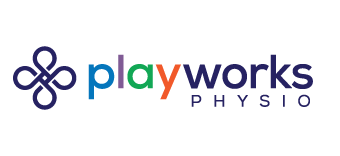Did you know that almost everyone is born with flat and flexible feet? In their first year, babies’ feet grow extremely fast – about 2.5cm! As children get older and start walking, their feet are still flat because the bones, muscles and ligaments are not yet fully developed.
Foot development
The main arch of the foot, the medial longitudinal arch, begins to form at 3-4 years of age. This arch continues to develop throughout the first 10 years of life and many studies state that the mature foot posture is not obtained until 7-10 years of age (Uden et al., 2017). This means that we should expect our children’s feet to be flat during their first 3-4 years and to then start developing an arch over the next 7 or so years.
Factors that can affect foot development
- Poor fitting shoes: too small, too big, too rigid
- Not enough barefoot time at home
What about those Flat Feet?
Flat feet aren’t always problematic. As you can see from above, younger kids tend to have naturally flatter feet and therefore treatment is not always necessary. If your child goes up on their tiptoes you should be able to see their arch form. This is considered “flexible flat feet”. These should not be painful. Ultimately painful flat feet in kids are a problem and non-painful, flat feet in children (or adults!) are not a problem and do not need to be treated unless they are accompanied by any of the points listed below.
Here are some reasons why we see kids at PlayWorks Physio for flat feet:
- Their walking pattern is different. For example, if they do not push off from their big toe, instead they use the inside of the foot
- Complaints of foot, ankle or knee pain
- Bunion development on the inside of the foot
- Frequent rolling of their ankles
- Complaints of their feet getting tired or sore after activity
- Excessive pronation (collapsing inwards) of feet
Things you can do to encourage proper foot development in your kids
- Find properly fitting shoes. Look for shoes with a supportive heel cup and flexible sole. CLICK HERE to learn how to pick the best shoes for your child.
- Have your child barefoot when safe/appropriate. This helps develop the muscles, ligaments and tendons of their feet and will contribute to arch development.
- Play around with walking on different types of surfaces. For example: grass, hills, trails, gravel, sand etc.
If you have any questions about your child’s foot development, email us at hello@playworksphysio.com
Written by: The PlayWorks Team
References: Uden et al. Journal of Foot and Ankle Research (2017) 10:37
